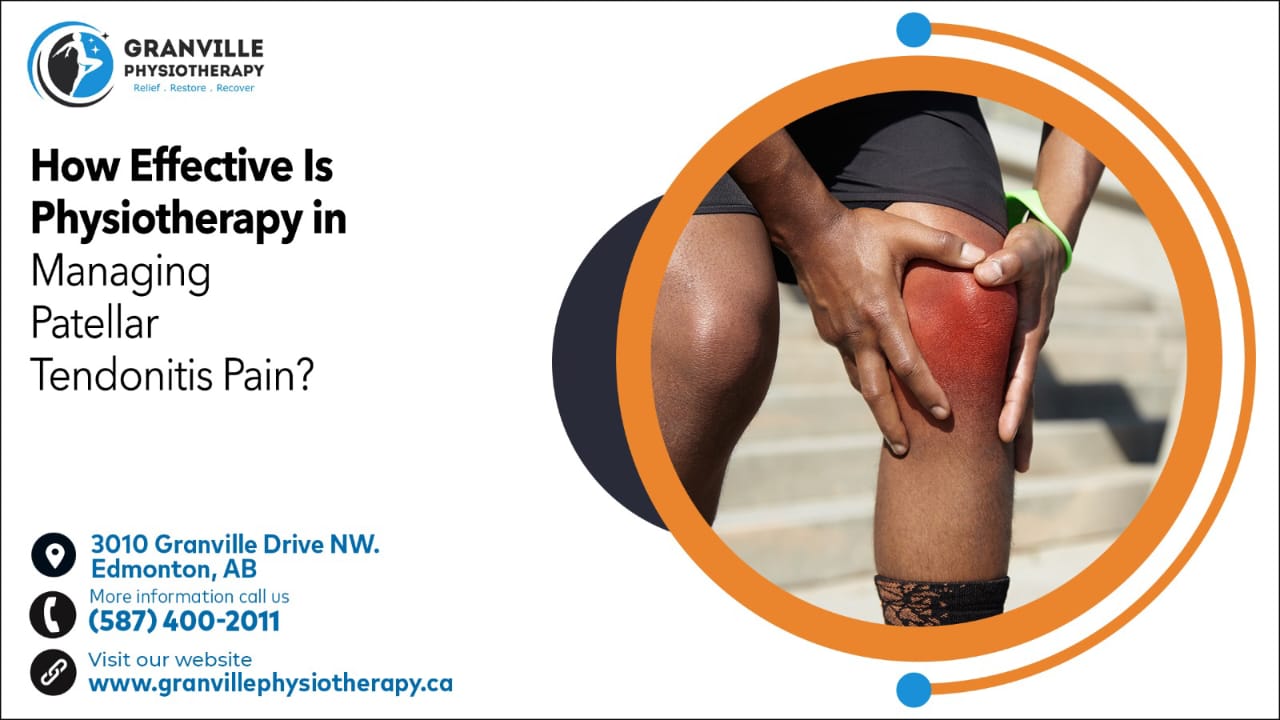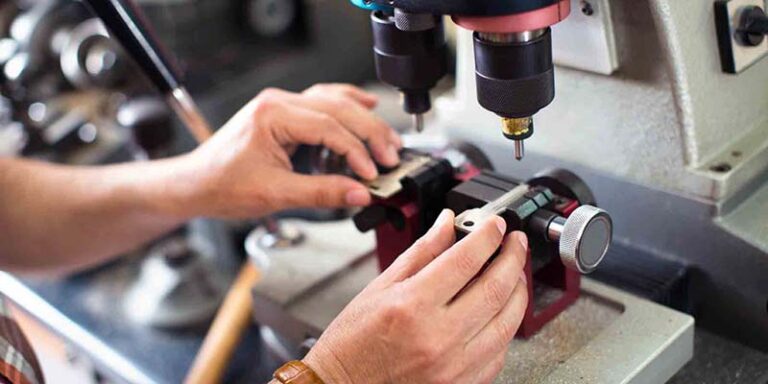How Effective Is Physiotherapy in Managing Patellar Tendonitis Pain?
Sports physiotherapy revolves around preventing, treating, and rehabilitating injuries associated with sports and physical activity. Sports physiotherapy in Edmonton aims to optimize athletic performance, minimize the risk of injury, and facilitate the safe and efficient recovery of athletes, allowing them to return to their sport at their full potential.
What is Patellar tendonitis?
Patellar tendonitis, also known as jumper’s knee, is a prevalent overuse injury characterized by inflammation or irritation of the patellar tendon. This tendon connects the kneecap (patella) to the shinbone (tibia) and is crucial for the function of the knee joint, particularly during activities that involve jumping or repetitive bending of the knee. Jumper’s knee tendonitis typically develops gradually and is often associated with activities that repeatedly stress the patellar tendon, such as running, jumping, or sports that involve frequent changes in direction.
Physiotherapy in Managing Patellar Tendonitis Pain:
Pain Management:
Sports physiotherapy in Edmonton utilizes various techniques to manage pain associated with patellar tendonitis. These may include ice therapy to reduce inflammation, electrotherapy modalities such as ultrasound or TENS (transcutaneous electrical nerve stimulation) to alleviate pain, and soft tissue massage to alleviate tension in the affected area. Sports physiotherapists may also employ the following strategies for managing patellar tendonitis pain:
Manual Therapy:
This involves hands-on techniques like joint mobilization and manipulation aimed at improving joint function and reducing pain. Some of these techniques include:
Soft Tissue Massage: Massage techniques can target the muscles surrounding the knee joint to reduce tension, enhance blood flow, and alleviate pain associated with patellar tendonitis.
Trigger Point Therapy: Trigger points, or localized areas of muscle tightness and tenderness, can contribute to patellar tendonitis pain. Physiotherapists may use manual pressure or massage techniques to release these trigger points and alleviate discomfort.
Kinesiology Taping:
Taping techniques are employed to provide support to the patellar tendon, improve alignment, and reduce pain during physical activity. Here are some techniques commonly used:
Fan Taping Technique: This involves applying multiple strips of tape in a fan-like pattern around the knee cap. The strips radiate out from the patella to offer support and stability to the joint, helping to reduce pain and inflammation in the patellar tendon.
Cross-Taping Technique: In this technique, two strips of kinesiology tape are applied in a cross pattern directly over the area of pain or inflammation. This helps to improve circulation, reduce swelling, and provide support to the patellar tendon.
Bracing:
Wearing a brace or patellar strap can offer additional support to the knee and minimize strain on the patellar tendon during physical activity, which may benefit some athletes. Here are some common types of braces and straps used for this purpose:
Patellar Tendon Strap: Also known as a patellar tendon brace or band, this strap is intended to exert gentle pressure on the patellar tendon just below the kneecap. This pressure helps to redistribute forces away from the tendon, reducing strain and alleviating pain during activity. It can be particularly advantageous for athletes who experience pain during jumping or running.
Patellar Stabilizing Brace: This type of brace is designed to provide overall support to the knee joint, including the patellar tendon. It typically consists of straps and hinges that help stabilize the kneecap and surrounding structures, reducing excessive movement and stress on the tendon. Patellar stabilizing braces can be helpful for athletes with chronic or recurrent patellar tendonitis, as well as those with underlying knee instability.
Stretching and Strengthening Exercises:
A tailored exercise program serves as a foundation of sports injury physiotherapy for patellar tendonitis. Specific stretching exercises help improve flexibility in the quadriceps and hamstrings, reducing tension on the patellar tendon. Strengthening exercises aim to strengthen the muscles around the knee, including the quadriceps, hamstrings, and glutes, to improve stability and support the joint. Common stretching and strengthening exercises used in athletic physiotherapy are:
Stretching Exercise:
IT Band Stretch: Stand upright with one foot crossed behind the other. Lean to the side of the back leg, reaching overhead with the arm on the same side. You should feel a stretch along the side of your hip and thigh. Hold for 30 seconds and repeat on the other side.
Strengthening Exercise:
Terminal Knee Extension: Stand with your back against a wall and a rolled towel behind your knee. Straighten your knee, pushing the back of your knee into the towel, then slowly bend your knee to return to the starting position. Repeat 10-15 times.
Biomechanical Correction:
Sports physiotherapists analyze the athlete’s movement patterns and biomechanics to identify any factors contributing to patellar tendonitis. They may prescribe corrective exercises or orthotic devices to address issues such as muscle imbalances, poor alignment, or faulty movement patterns. Here are some common strategies used for biomechanical correction:
Gait Analysis:
Sports physiotherapists often conduct a thorough analysis of the athlete’s walking and running patterns (gait) to identify any abnormalities or asymmetries that may contribute to patellar tendonitis. This analysis may involve observing the athlete’s stride length, foot strike pattern, and overall lower limb alignment.
Alignment Correction:
Incorrect alignment of the lower limb, such as pronounced inward or outward rotation of the hip, knee, or ankle joints (commonly known as “pronation” or “supination”), can elevate strain on the patellar tendon. Sports physiotherapists may recommend corrective exercises or manual therapy approaches to enhance alignment and alleviate undue pressure on the tendon.
Enhancing Athletic Potential:
Sports physiotherapy in Edmonton plays a pivotal role in the comprehensive management of patellar tendonitis, a common and often debilitating condition among athletes. Through a multifaceted approach encompassing various techniques and modalities, sports physiotherapists strive to alleviate pain, restore function, and optimize performance in individuals affected by this condition. Granville Physiotherapy in Edmonton serves as a cornerstone in patellar tendonitis treatment, providing comprehensive care that is customized to address the distinct needs and goals of each individual. By integrating evidence-based interventions with a patient-centred approach, sports physiotherapists strive to facilitate optimal outcomes and empower athletes to thrive both on and off the field.



